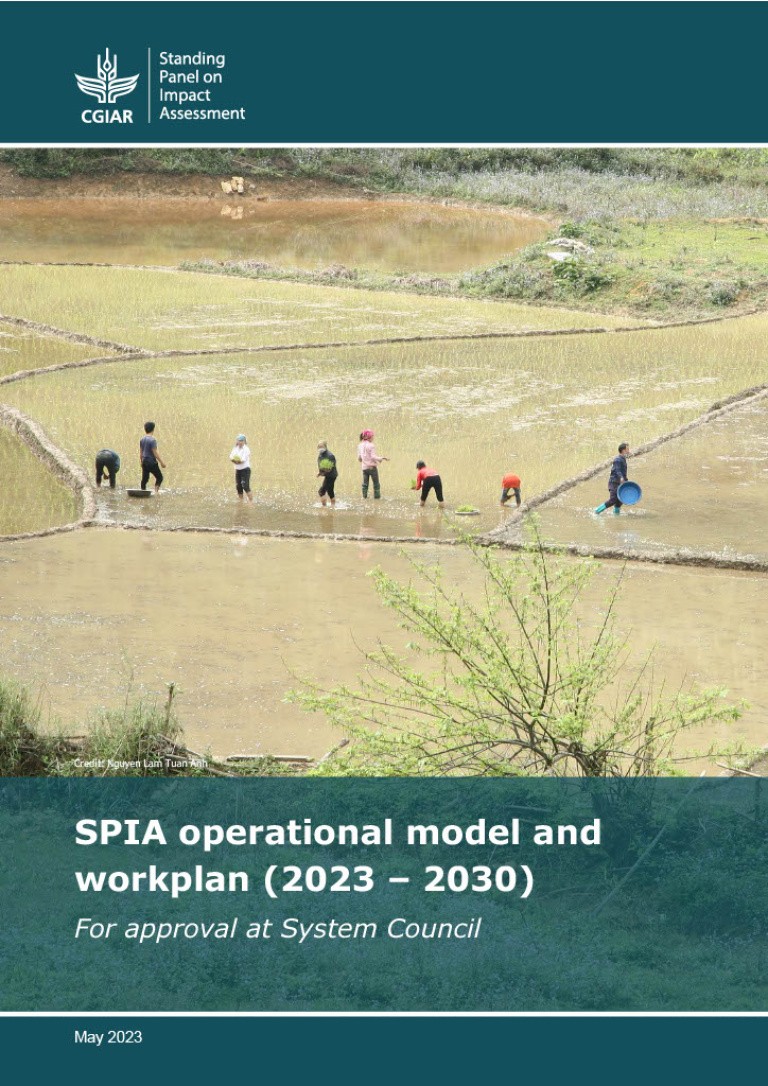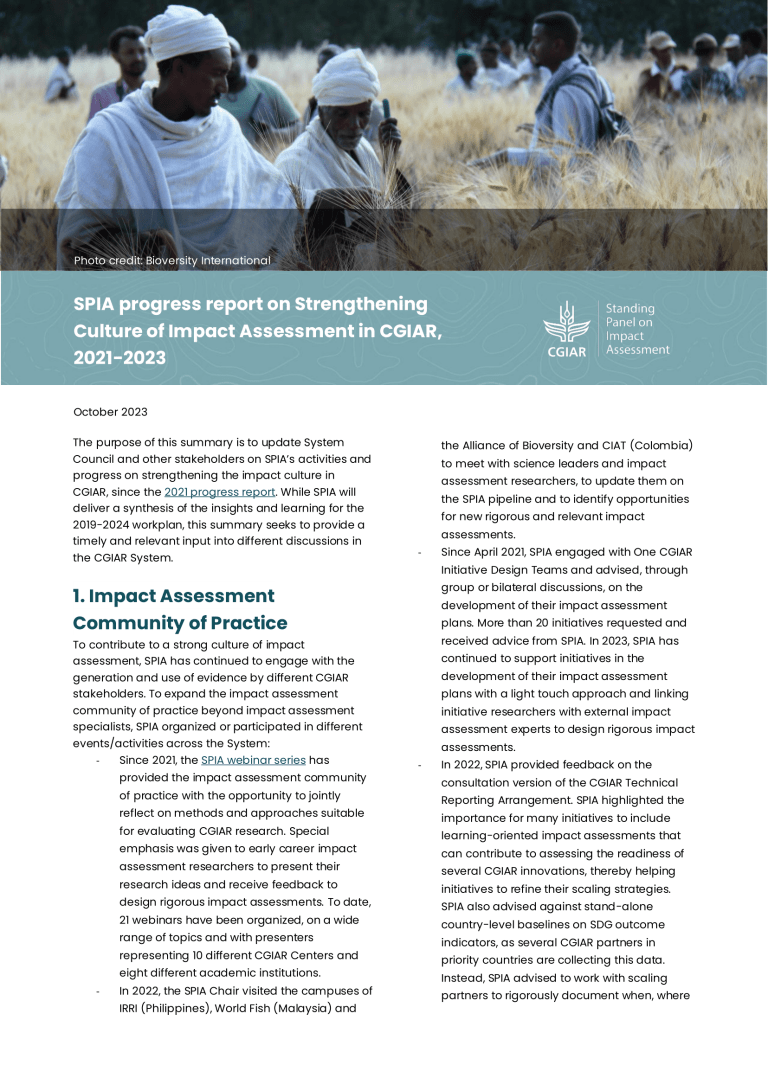Alemayehu Ambel is a Senior Economist, and Asmelash Haile Tsegay is a Survey Specialist, both in the Development Data Group of the World Bank. As members of the Living Standards Measurement Study (LSMS) team, they have led the collaboration with the Ethiopian Central Statistical Agency (CSA) for many years. SPIA joined this partnership in 2015 in order to develop and integrate data collection protocols for scaled CGIAR-related innovations into the Ethiopia Socioeconomics Survey (ESS) – a nationally-representative household survey.
The CGIAR Standing Panel on Impact Assessment (SPIA) has recently released “Shining a Brighter Light: Comprehensive Evidence on Adoption and Diffusion of CGIAR-Related Innovations in Ethiopia”, a report that synthesizes a 5-year collaboration with the Central Statistics Agency and the Living Standards Measurement Study (LSMS), World Bank team.
Monitoring progress in agriculture requires evidence on innovations and their adoptions. To better guide policies and programs in the sector it is important to have data on, for example, how many farmers are using improved technologies such as improved seeds and improved land management practices. It is also important to know if a technological adoption in a given area has been successful or not and why. This journey into a better understanding of what works, where, and to whom in agriculture certainly starts with better data on agriculture.
Since its inception, the LSMS-ISA project has had a strong focus on agriculture. The project in Ethiopia implements the Ethiopian Socioeconomic Survey (ESS) that collects several types of innovations across the domains of animal agriculture, natural resource management practices and crops. ESS created a platform for researching accurate and cost-effective measurements, intending to collect better data on agricultural innovations.
The team started with exploring the use of visual-aid protocols, particularly in the case of crop residue cover (Kosmowski et al., 2017) and orange-fleshed sweet potato varieties (Kosmowski et al., 2018). Following demonstrated gains in accuracy over previously collected farmer’s elicitation data, these protocols were integrated into the next rounds - ESS 2015/16 and 2018/19. For instance, on orange-fleshed sweet potato:
- When [VARIETY NAME] is cut after harvest, what is the color of the flesh? [__]


Using the visual aid in data collection will help easily identify which variety was the respondent household was cultivating. That will minimize data errors due to misreporting in variety names, colors, and language barriers. With more and more surveys now transitioning to CAPI, visual-aids integration constitutes an even lower hanging fruit. Notwithstanding, visual-aids are useful for innovations that exhibit distinguishable traits – as exemplified here. This is an exception more than a rule in crop varietal identification and additional efforts have been directed toward the piloting and scaling up of DNA fingerprinting. In the most recent ESS 2018/19 (wave 4), DNA fingerprinting methods were used to identify improved varieties of barley, sorghum, and maize.
The report findings are impressive and should be of interest to practitioners. The report presents quantitative evidence on the adoption of 18 CGIAR-related innovations from the Ethiopian Socioeconomic Survey (ESS). The richness of the ESS data is strikingly leveraged by showing (1) data on who the adopters are (using socioeconomic characteristics collected ); (2) maps and spatially explicit data highlighting where the adopters are; and (3) evidence of synergies between different innovations. The report further provides evidence that CGIAR-related innovations are being adopted by millions of households across the different regions of Ethiopia. In an interesting exploratory exercise, the team matches the location of CGIAR projects with the ESS enumeration areas – an idea that could certainly be further exploited for monitoring or impact assessments.
This experience, possibly unique in its far-reaching implications for agricultural monitoring and policies, has been a very fertile one. We look forward to continuing the collaboration with the CGIAR SPIA.
[Last month, SPIA and the World Bank held a public webinar on the report - a video recording of that event is available here]
References
Kosmowski, F., Stevenson, J., Campbell, J., Ambel, A. & Tsegay, A.H., (2017). On the Ground or in the Air? A Methodological Experiment on Crop Residue Cover Measurement in Ethiopia. Environmental Management 60, 705–716. https://doi.org/10.1007/s00267-017-0898-0
Kosmowski, F., Aragaw, A., Kilian, A., Ambel, A., Ilukor, J., Yigezu, B., & Stevenson, J. (2019). Varietal identification in household surveys: results from three household-based methods against the benchmark of DNA fingerprinting in southern Ethiopia. Experimental Agriculture, 55(3), 371-385. doi:10.1017/S0014479718000030



